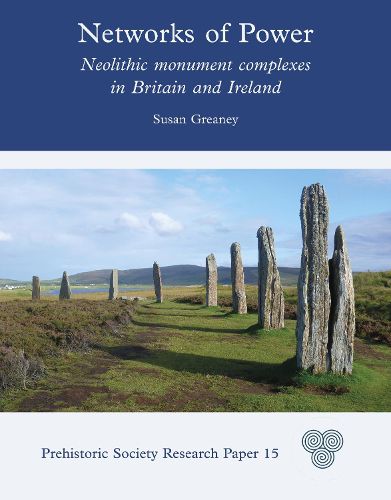Readings Newsletter
Become a Readings Member to make your shopping experience even easier.
Sign in or sign up for free!
You’re not far away from qualifying for FREE standard shipping within Australia
You’ve qualified for FREE standard shipping within Australia
The cart is loading…






In the Neolithic period across Britain and Ireland a number of unusually dense concentrations of ceremonial monuments emerged and developed. These monument complexes share strikingly similar patterns of activity and common architectural types, and acted as nodal points in networks of shared ideas and circulating objects. This major synthesis examines the phenomena of monument complexes by exploring five key examples, Stenness-Brodgar in Orkney, Bru na Boinne in Co. Meath, Ireland, Avebury and Stonehenge, both in Wiltshire, and Dorchester in Dorset. Why did complexes emerge in these locations? What was the trajectory of monument construction and other forms of activity? How do the chronologies and spatial organisation of these complexes compare? Monuments built of earth, timber and stone provide important evidence for social organisation in the Neolithic period. The immense labour and co-operative demands of such projects have been viewed as evidence for the presence of powerful elites and hierarchies. However, direct evidence for social stratification is sparse, either from burials or settlements. This volume adopts a new approach to power, inspired by relational, new materialist and assemblage thinking, to explore how unequal power relations between people were mediated through non-human places and things at monument complexes. In a thematic structure exploring the underworld, surface world and upper world, including topography, geology, watercourses and celestial bodies, are explored. Relations of time are then examined, including the presentation of a detailed narrative for the Dorchester complex, based on new radiocarbon dating. Monument complexes emerge as places where people collaborated and negotiated with each other, through engagement with non-human places and times. AUTHOR: Susan Greaney is a lecturer in archaeology at the University of Exeter, where she teaches a range of topics including prehistoric Europe, heritage, museums, and archaeological theory. Her research focuses on monuments, landscapes, and societies of Neolithic and Early Bronze Age Britain and Ireland, with a particular interest in radiocarbon chronologies and social inequalities. 100 colour and b/w illustrations
$9.00 standard shipping within Australia
FREE standard shipping within Australia for orders over $100.00
Express & International shipping calculated at checkout
In the Neolithic period across Britain and Ireland a number of unusually dense concentrations of ceremonial monuments emerged and developed. These monument complexes share strikingly similar patterns of activity and common architectural types, and acted as nodal points in networks of shared ideas and circulating objects. This major synthesis examines the phenomena of monument complexes by exploring five key examples, Stenness-Brodgar in Orkney, Bru na Boinne in Co. Meath, Ireland, Avebury and Stonehenge, both in Wiltshire, and Dorchester in Dorset. Why did complexes emerge in these locations? What was the trajectory of monument construction and other forms of activity? How do the chronologies and spatial organisation of these complexes compare? Monuments built of earth, timber and stone provide important evidence for social organisation in the Neolithic period. The immense labour and co-operative demands of such projects have been viewed as evidence for the presence of powerful elites and hierarchies. However, direct evidence for social stratification is sparse, either from burials or settlements. This volume adopts a new approach to power, inspired by relational, new materialist and assemblage thinking, to explore how unequal power relations between people were mediated through non-human places and things at monument complexes. In a thematic structure exploring the underworld, surface world and upper world, including topography, geology, watercourses and celestial bodies, are explored. Relations of time are then examined, including the presentation of a detailed narrative for the Dorchester complex, based on new radiocarbon dating. Monument complexes emerge as places where people collaborated and negotiated with each other, through engagement with non-human places and times. AUTHOR: Susan Greaney is a lecturer in archaeology at the University of Exeter, where she teaches a range of topics including prehistoric Europe, heritage, museums, and archaeological theory. Her research focuses on monuments, landscapes, and societies of Neolithic and Early Bronze Age Britain and Ireland, with a particular interest in radiocarbon chronologies and social inequalities. 100 colour and b/w illustrations